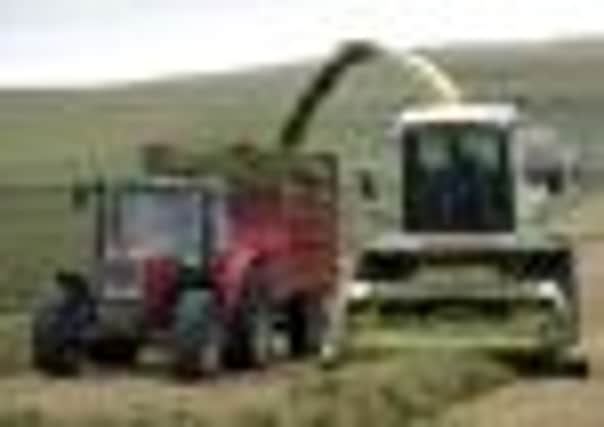SAG Agricultural College talks silage samples


With an average dry matter of 27 per cent, ME of 10.3, D-value 64, Crude Protein of 121 and high ash content, many dairy farmers are going to be buying complementary feeds to increase the energy and protein in the cows’ diets.
However this has been an exceptionally wet year with May and June having been reported as the wettest months on record. This exceptionally wet weather caused delays in the harvesting of forage and as a result the quality is poorer. In order to make good quality forage, farmers are looking to find the balance of high sugars, proteins and a high volume, but at the same time keeping the fibre to a minimum as this detracts from the eating quality for the cattle.
Advertisement
Hide AdAdvertisement
Hide AdFor those farmers which were able to cut their silage at the optimum time, before it turned too wet, the silage quality will be good, however most farmers will have found that there is less in the pit this year as there was last year.
Feeding substitute and complementary feed stuffs to cattle will help even the supply of forage out until the spring, however as many farmers will already have found out, supplies of alternate feeds is both expensive and scarce.
The main protein source in cattle diets, soya, is currently trading at £450, with some reports of even higher prices. This again is due to the extreme heat which America and Russia have been having this year which has resulted in many crops failing due to drought.
With home grown forage and cereal of reduced quality and quantity farmers should consider selling any animals which are not performing to their potential and sell store calves earlier to reduce the feeding bill. Stock which are not producing and are not being kept for replacements would be better sold off the farm, to reduce the number of mouths to feed and the labour required for this winter.
Advertisement
Hide AdAdvertisement
Hide AdNot only is soya trading at prices never seen before, home grown grain is also suffering with high prices and lower than normal yields. The weather has caused a lot of problems so far this summer with cattle housed 3 months earlier than normal and winter feed stocks have been fed to cattle earlier to maintain the condition for milk production, bulling and calving.
It is essential that farmers find out the quality of feeds in the pit before winter begins to try and reduce feed bills. It could be a winter of stable production if a little time and effort is used just now to agree a winter contract with a nutritionist to ensure the ration is balanced at as low a cost as possible.